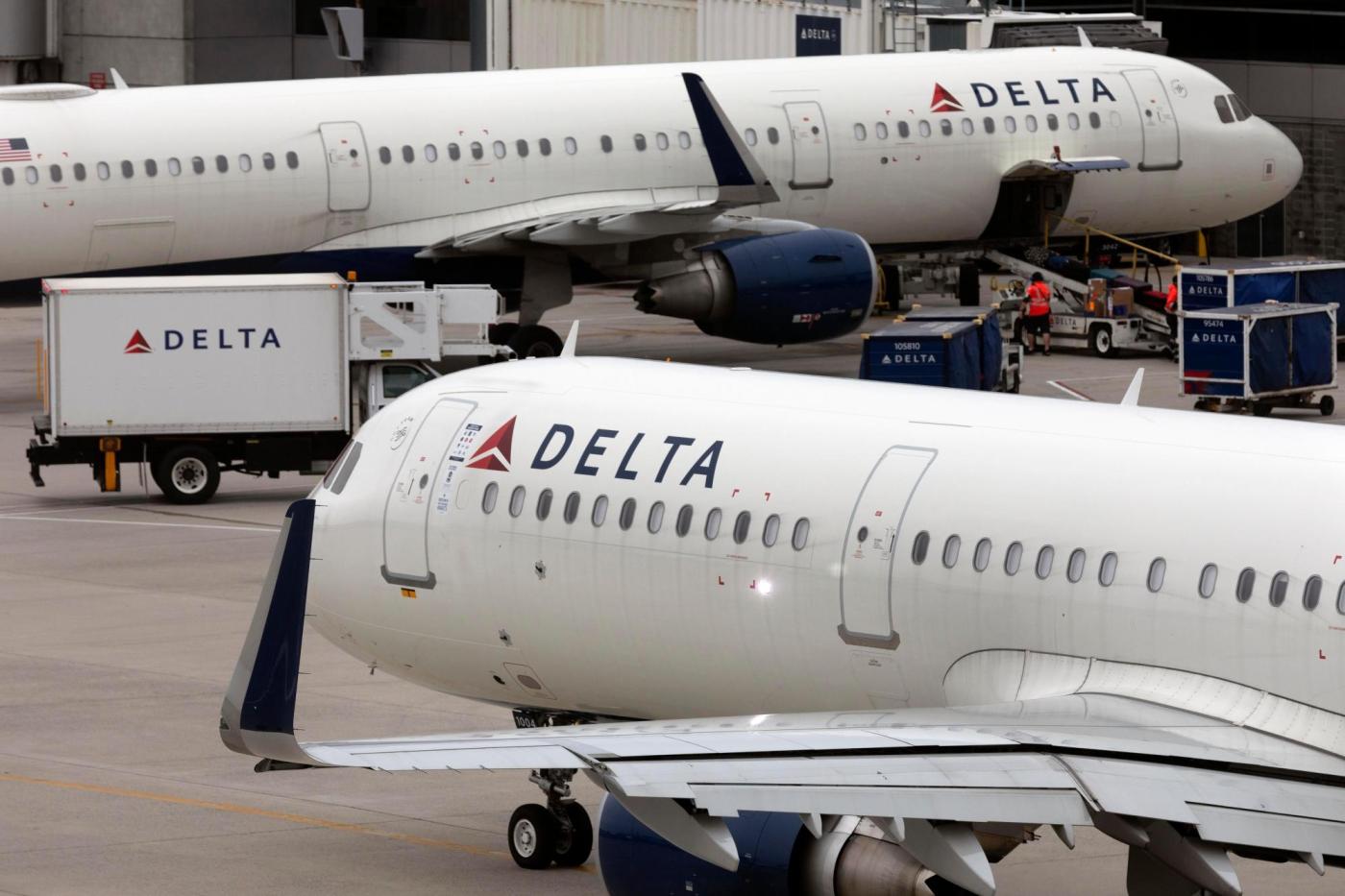
Planned Rosemount blending facility will funnel sustainable fuel to Delta
Imagine using cooking oil, cover crops, tree limbs, roots, foliage and other nature-based ingredients as a made-in-Minnesota replacement for jet fuel.
When it comes to promoting regional economic development, “sustainable aviation fuel” isn’t necessarily the first image that comes to mind. Nevertheless, a coalition of the state’s leading businesses announced major milestones on Tuesday in developing a supply chain that will begin with a converted ethanol plant in Luverne and rely on a new blending facility in Rosemount to deliver a steady supply of sustainable fuel to the Delta Airlines hub at Minneapolis-St. Paul International Airport.
That’s no small undertaking: Delta’s MSP operations alone require 250 million gallons of fuel annually. The airline is aiming to convert 10% of its U.S.-based fuel consumption to sustainable aviation fuel, or SAF, by 2030, and organizers predict other corporate customers are likely to follow.
Key aspects of the end-to-end supply chain are still in early stages of development, including the planned new blending facility at Flint Hills Resources’ Pine Bend refinery in Rosemount.
Still, the progress to date is a culmination of a year-long effort led by the Greater MSP Partnership, a St. Paul-based economic development association that counts St. Paul and Minneapolis as dues-paying members. Key partners in the burgeoning initiative include Bank of America, Ecolab and Xcel Energy.
In June 2023, Minnesota became one of the first states to enact a tax credit and construction incentive to support the development of SAF.
The impact will be showcased this week when the three-day North American SAF conference lands at the St. Paul RiverCentre. Speakers include representatives of the U.S. Department of Agriculture, U.S. Department of Transportation, U.S. Department of Energy and the Federal Aviation Administration.
A year of SAF work
Proponents believe they’ll be able to reduce the lifecycle carbon emissions of jet fuel by more than 80%. If successful, it will be the first large-scale, end-to-end, sustainable aviation fuel supply chain in the nation, with a target market that could extend beyond Minnesota.
Current certification standards allow up to 50% neat SAF to be blended with regular jet fuel, known in the industry as Jet A. The problem? Experts say there’s not enough sustainable aviation fuel produced today to fuel the world’s airlines for a single week.
To boost production in Minnesota, efforts this past year include:
• Backed by Delta Air Lines, Flint Hill Resources is developing the state’s first SAF blending facility, with the goal of blending up to 30 million gallons of neat SAF annually at the Pine Bend refinery. The goal is to have the facility up and running by the end of 2025, at which point it will likely be the first non-coastal facility in the nation that can blend SAF with conventional jet fuel. The blended fuel will be delivered through the existing Flint Hills pipeline to MSP International, Delta’s second largest U.S. hub.
• Bank of America, Deloitte, Delta, and Ecolab have formed a “demand consortium” to purchase the first several million gallons of SAF each year. The goal is to jumpstart demand, drive down costs and rev up the market while offsetting carbon emissions related to their own employees’ business travel.
• In August, the Federal Aviation Administration announced a $16.8 million “Inflation Reduction Act” grant to convert an existing ethanol and isobutanol fuel facility in Luverne into an alcohol-to-jet fuel facility for SAF production. The plant will support the first conversion of Minnesota crops to SAF within the state.
• The University of Minnesota is developing a novel crop called winter camelina seed that can be used for multiple purposes, including producing oil for conversion into SAF. The goal is to bring the first shipment of camelina-derived SAF to MSP International this fall.
Greater MSP has predicted that key aspects of SAF production, from financing to storage and blending, will be established in Minnesota by the end of 2027, with large-scale production to follow beginning around 2028 and broader industry growth after 2035.
Related Articles
Letters: Please wake up, fellow Democrats. Cities have limited budgets
Global outage: Check flight status before heading to MSP airport, officials urge
Sheldon Jacobson: What can the FAA and TSA do to handle spikes in flyers?
In plea, airport Chick-fil-A manager admits embezzling from employer, allegedly spent it on jewelry and OnlyFans


